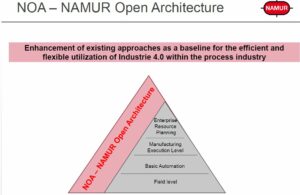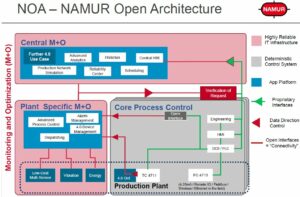Are you still driving or are you already flying?
The world is changing and new trends, technologies and business models regularly catch on. Or as Heraclitus said around 2500 years ago, “Panta Rhei – everything flows”. This statement was based on his knowledge of the natural process of continuous and intermittent change.
That’s something we’re familiar with from the mobility market, for instance: about a century ago, horses made way for gasoline cars in the space of a few years. We’re now gradually getting used to seeing electric cars on the road and the first Volocopters are starting to appear (photo: Wired)

A disruptive transformation is taking place rapidly and unnoticed. The changes are impacting not only on individual technologies but also on the way they interact. At the same time, they are opening up new possibilities for improving, modifying or totally redesigning existing business models.
Process automation has never been so exciting as it is today
This phenomenon has now also spread to process automation, which traditionally has a reputation for being conservative and inert – at least when it comes to adapting new technologies. Yet the process industry, too, is frequently confronted with new challenges and must make the most of the opportunities created by digitalization.

NOA[H] is building an ark for the process industry in order to connect the pyramid and the cloud together.
A NAMUR proposal based on open architecture, and aimed at uniting the availability and security of the automation pyramid with the benefits of the digital transformation, is meanwhile on the table. Its name: NAMUR Open Architecture (photo: NAMUR) or NOA. NOA will hopefully steer the process industry safely through the digital transformation. The future automation landscape will be divided into three areas for this purpose, with the goal of establishing an open communication channel.
These three areas differ as regards localization and also applications.
Automation still begins close to the production process, in the field and in the control room. And it’s here – in the gray area of the NOA concept diagram – that the automation heart of the plant beats. Reliability is the top priority here. This must also be maintained in Industry 4.0.
As automation continues to gather momentum, further potential is revealed: plant asset management and advanced process control are just two examples that spring to mind. Let’s call it plant-level MES.
Even now, individual production facilities are embedded in a complex IT and control network. Yet in order to communicate securely from the core automation with the M+O area, which is pink in the NOA diagram, open, non-proprietary interfaces are vital. These interfaces separate the different areas from one another and ensure standardized transitions.

The central M+O allows specialized applications and services to be provided centrally across multiple plants, so that reliability centered maintenance or big data analyses can be realized holistically and affordably. It is also likely that central M+O components will promote connectivity via cyber-physical systems which, among other things, will permit more and more services to be outsourced to suppliers and manufacturers in line with actual needs. The pink area in the NOA diagram thus serves as a starting point from which the options opened up by the Industry 4.0 initiative can be implemented in the process industry too.
Trial and error
Industry 4.0 applications will only gain a foothold in existing (brownfield) plants if the effort and expense described by NOA are restricted to a minimum, in other words if no major investments are necessary beforehand to upgrade infrastructure such as field communications or control systems. The idea is that NOA should enable innovative technologies to be utilized quickly and easily in accordance with the trial-and-error principle. Rapid commercial success will be facilitated in this way. Yet in spite of all the openness, availability and security, it’s important not to have any negative impacts on (i.e. interfere with) or endanger the status quo. NOA optionally allows everything to be realized outside of the pyramid for this reason.
We at Yokogawa have always held a firm conviction here: “Simply being content that the digital transformation is technically feasible is not enough for us engineers”. In the meantime, we have come up with three working demonstrators, which we presented at the NAMUR Annual General Meeting 2017, Achema 2018 and the NAMUR Annual General Meeting 2018.
Our three demonstrators cover the following applications:
- Valve diagnostics in the cloud, including recommendations for action back to the process control system (Verification of Request)
- Coriolis diagnostics in the plant-specific M&O for preventive cleaning and recalibration, including recommendations for action back to the process control system (Verification of Request)
- PAT diagnostics in the cloud, including recommendations for action back to the process control system (Verification of Request)
The PAT application is described in a blog post called “PAT demonstrator – NOA is the ideal partner” by Werner Worringen. Information on the other two demonstrators will be the subject of other blog posts coming soon.
We thus demonstrated proactively to the community what it means to realize the digital transformation co-innovatively in a specific industry.
NOA is here to stay – and fast representation of the economic benefits is both realistic and feasible. It’s now up to us to actively shape this initiative.
Where do you stand when it comes to the digital transformation of the process industry? Do you believe NOA is a suitable strategy for implementing this transformation?
What changes are you facing today or do you anticipate you’ll be facing in the future? After all, there’s no escaping it: Panta Rhei – everything flows.




